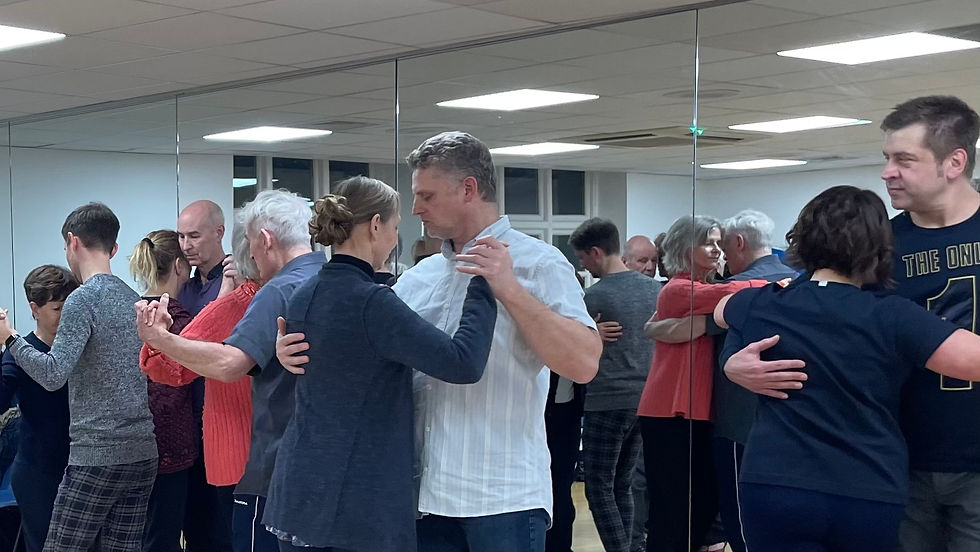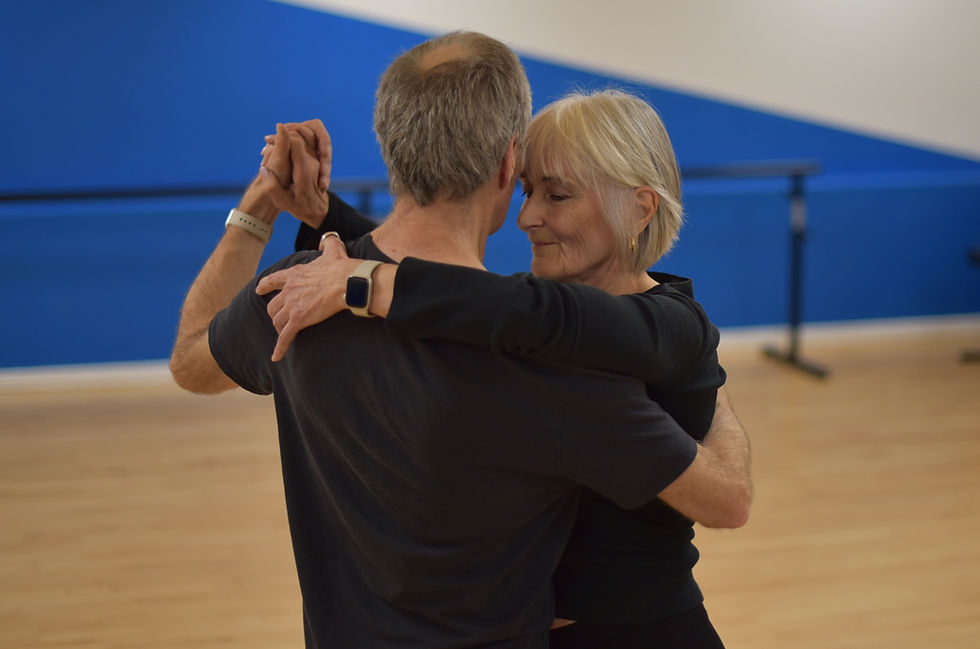Dancing on a Crowded Floor
- tangoadmin4
- Feb 27
- 4 min read

Approaching a crowded milonga floor can be intimidating for dancers early in their tango career. But with a few adjustments it’s possible to start enjoying the experience to the point where you seek out busy milongas rather than try to to avoid them.
The adjustments you need to make are partly technical (choice of steps, embrace etc). But you might also need to change your mind-set. Taking each of these in turn…
Technical changes:
Embrace. A comfortable open embrace isn’t going to be your friend on a crowded floor. This is a situation that calls for a close embrace. It’s worth spending time getting comfortable with this embrace because not only is it essential for a crowded floor but because dancing with someone in a close embrace is one of the chief delights of all tango.
Followers need to be able to draw on their hard-won skills. They have to remain balanced and above all present so that they are in a position to react to any rapid changes dictated by the evolving situation.
Leaders need to forget any step patterns they might have perfected. You are not going to be able to get on the floor and simply do your stuff. What you are going to need is a much more flexible approach - simple changes of direction and elements like pivots, turns, checks (cortes) and pauses you can execute in your own space, all fully led. Think in elements of moves rather than collections of steps. A simple back cross for example is more useful than a full ocho. These simple movements need to become instinctive and automatic. It’s worth saying that a simplified vocabulary of movements in no way limits your ability to express the music. In fact it’s usually an advantage when it comes to dancing musically.
Think about dancing in phrases, using the music to help you. Don’t try to unroll an endless sequences of steps till the music stops.
Don’t neglect pauses. Pausing (which is very different from stopping) can be very powerful when space is limited.
Slow down. The ronda isn’t a race track. And don’t even think about overtaking.
Now the mind-set. If you approach the floor determined to dance things you have prepared in advance - a clever sacada sequence from a workshop say - things aren’t going to go well. You will inevitably end up competing with other dancers for the limited space on offer. A competitive tango floor is not a pleasant place to be.
You need to start thinking of the ronda as a living breathing entity that you are going to contributing to. Instead of competing with other dancers you have to cooperate with them in order to create something you can all share. Which is another way of saying you have dance with the other couples rather than against them. This means being alive to the people around you and to their dance so that you can yield space when necessary and allow them to do the same for you. You’re dancing to the same music don’t forget so this should give you clues to what they are doing or about to do. This flexibility is a more productive way to think of organising the space on the floor than advocating a set of traffic rules based on things like lane discipline.
This also explains the excellent advice that on a crowded floor you should seek out the best dancers and stay close to them. Because this sharing of space will come naturally to them. (Notice, we’re talking here about the best dancers, not the most showy. If there are couples who seem to be dancing for the people watching, keep as far away from them as possible.) At the end of a tanda we often thank our partners for the dance. Ideally you should be leaving the floor with an acknowledgement to the couples who have shared the immediate space around you. After all, you’ve just created something special together.
As to where to dance, try to keep to the outside of the ronda. People who are not good at sharing space tend to gravitate inwards where they don’t have to worry about other dancers. This can work up to a point, but the more crowded the floor becomes the more it’s a tactic destined to fail.
Take care how you enter the floor. Leaders should wait at the side and try to catch the eye of the couples as they pass. A good leader already in the ronda will be aware of you and welcome you with a simple nod.
Creating this perfect ronda might be starting to sound like a council of perfection. It’s true that it’s a rare phenomenon. Part of the responsibility here has to lie with we teachers. All too often tango teaching focusses on individual skills and building a ronda is relegated to something people can worry further down the track once they’ve learned to dance. This can lead to milongas where the ronda barely exists - there are merely people dancing the steps they’ve learned and trying to keep out of each other’s way. There is no reason why the goal of perfect ronda shouldn’t be highlighted from the outset. Simple navigation steps can be much more useful to students than a diet of ochos, sandwiches and sacadas. Ultimately, if the floor is chaotic and undisciplined the dancers you want to attract will stay away. A good floor attracts good dancers. It can be a tango community’s best asset.










Comentarios